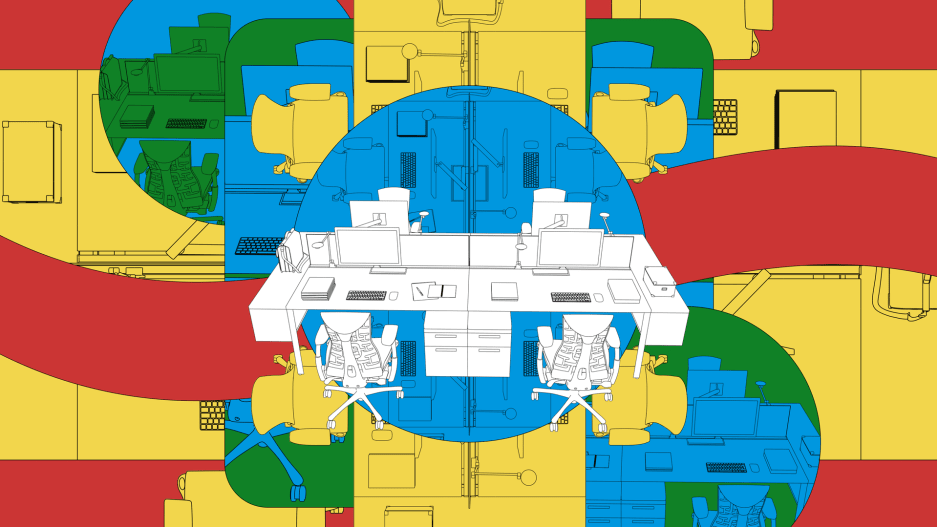- | 5:54 pm
Want to weather the Great Resignation? Create an internal brand employees actually believe in

Two years into the COVID era, many of us are tired of living through uncertainty. One way we’re dealing with that is by rethinking and redefining our work lives. This has led to the so-called Great Resignation: a phrase coined to describe the record high rates of employees who left their job during the fall of 2021. As a result, we’re witnessing one of the biggest cross-industry talent shortages in at least a decade.
This leaves businesses with a stark question to answer. How do they become the “winners” of the Great Resignation—the kind of organization people choose to stick with, instead of leaving behind?
There are, of course, practical answers to this question. Your attractiveness as an employer will depend on your office location, the people in your team, how much you pay, how flexible your parental leave is, and so on. But above and around this sits your internal brand: the story you tell employees, or future employees, about the work they can do at your company.
Employers are used to thinking about how to engage and retain their customers through their external brand. But internal brands are often either neglected entirely, or reduced to a list of perks and benefits.
Now’s the time to do things differently.
REMINDING PEOPLE WHY THEY’RE HERE
More and more of our clients are asking us to help them build an internal brand. A decade ago, internal branding was often a cynical exercise. Leaders would sit in a workshop for a day, debating a list of values like “honest” and “curious,” and then blow those words up on the walls.
But effective internal branding isn’t about listing off words, or creating a pithy manifesto summarizing “why we’re here.” Instead, a good internal brand does something much more powerful: it tells each and every employee “why you’re here.”
British retailer John Lewis & Partners is a great example of this, with a clearly articulated story about why their employee ownership model makes life better for employees. This is arguably why the company boasts such a high staff retention rate: 80% of staff stay for more than a year—far higher than most high-street rivals.
GIVE PEOPLE A MISSION TO ADVOCATE FOR
Defining and articulating your internal brand takes time and investment, and the work required will vary from company to company. But this should be measured against the costs of not building a strong internal brand. Employers typically spend a third of an employee’s annual salary filling a role, which makes employee churn extraordinarily expensive. A story that encourages people to stick around can therefore be extremely valuable.
And remember that a strong internal brand doesn’t just help with retention: it can help you attract the best candidates, and reduce the time, money, and energy spent on recruitment. Consider the way autonomous vehicle company Zoox talks to potential employees on their Careers page, leading with a clear narrative about why their job at Zoox would be different. It’s a far more compelling place to start than “Here is a list of perks.”
YOUR CUSTOMER IS YOUR EMPLOYEE
So how do you start building a stronger internal brand? You talk to the “customers”—that is, your employees. Ask new hires why they joined: if you and your competitors offered the same job, why would they choose your company? Then, turn the question around: Why do you want people to choose your company? If there’s a gap, don’t ignore it—work to reduce it. The crux of a successful internal brand is a “why” that unites you with your employees.
Zappos is a great example of a company that’s done this sometimes-challenging work. The brand’s dedicated list of deeply actionable internal values were codeveloped with employees, galvanizing and empowering them. And the retailer takes concrete steps to build a committed team: When new hires complete their training, they’re offered a $2,000 early-exit payment if they decide they don’t want to work at the company. This ensures that those who stay on really want to be there.
A BRAND THAT LIVES ON
Even with the strongest internal brand, some employees will choose to leave your company. But your brand continues to pay off even then. With a clear narrative about the work you do, ex-employees become ambassadors for your organization: people who are proud to have worked for you, and happy to talk about it.
This underscores the multifaceted benefits of a strong internal brand: Just like your external brand, it’s a thread that runs through everything. It motivates people day-to-day. It puts different teams on the same page. It helps you find new hires who will add to the culture of your organization, and gives recruiters a way to sell you to the very best candidates. And it turns ex-employees into alumni: people who always carry a piece of your organization with them.








































